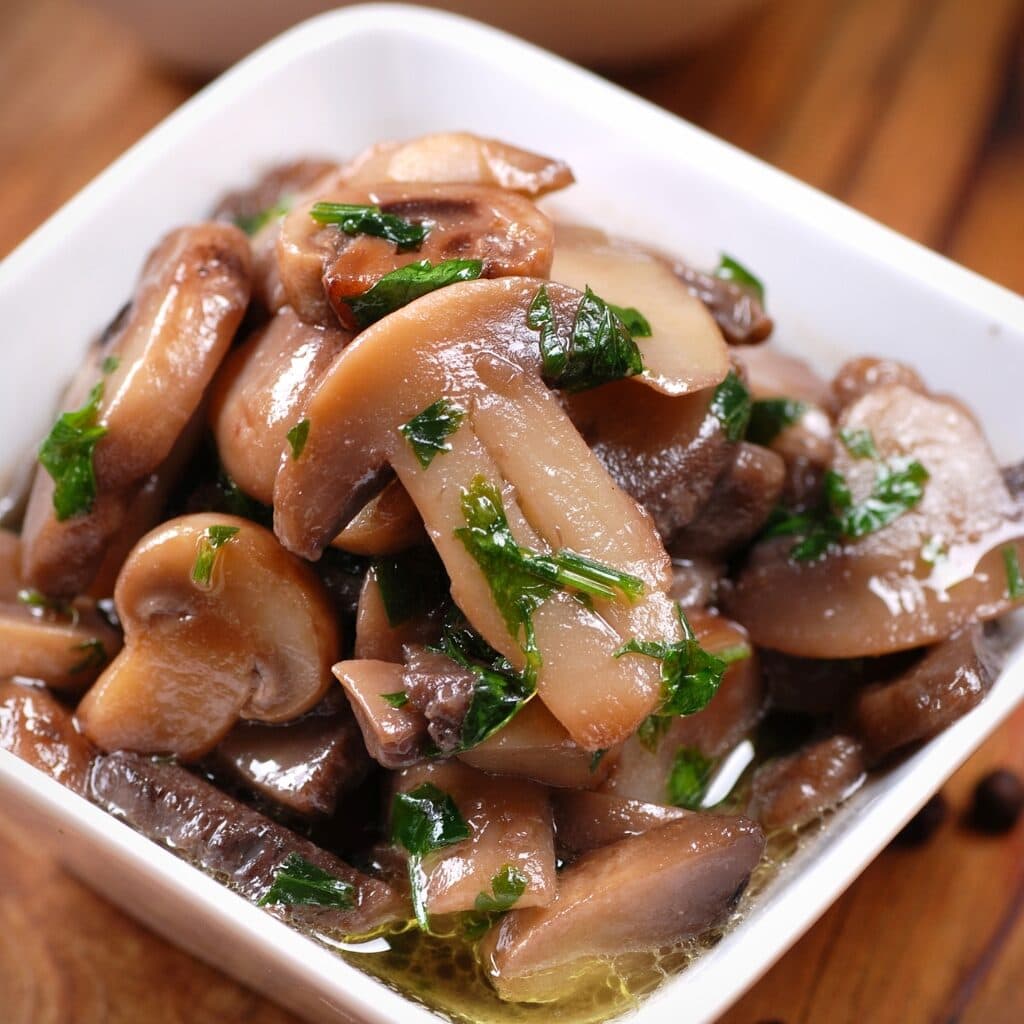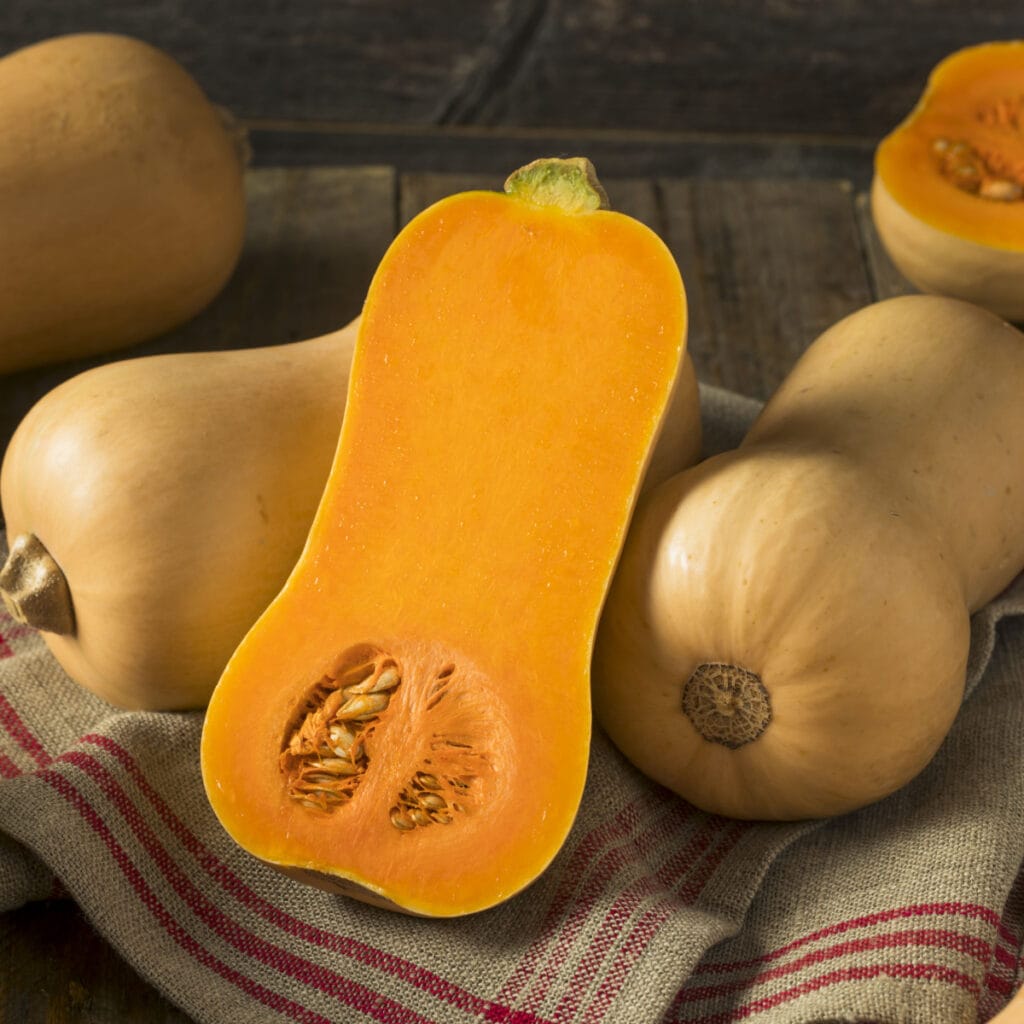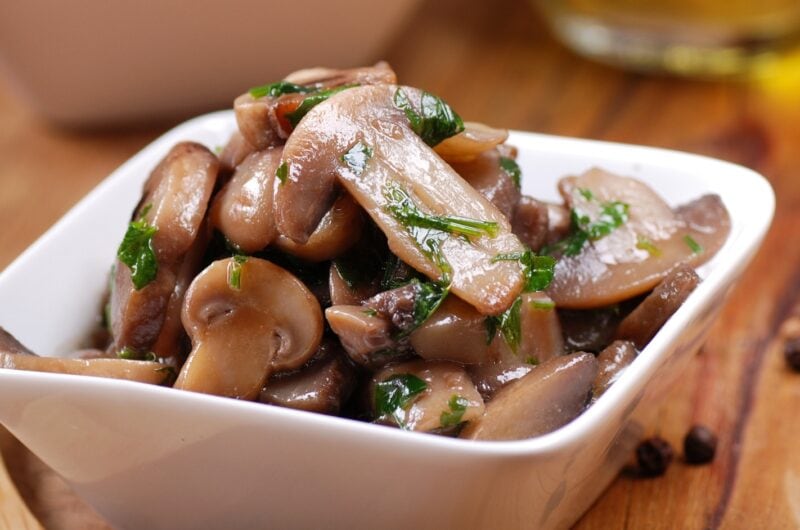The best substitutes for mushrooms include zucchini, tofu, and eggplant. Onions, squash, and artichoke hearts also work well in recipes.
Whether you’ve run out or maybe you’re cooking for someone who’s allergic, these substitutes have your back.

Mushrooms, with their unique earthy flavor and satisfying texture, can be hard to replace. But guess what? There are options aplenty!
There are alternatives that mirror the flavor, texture, and even the nutritional punch mushrooms pack.
Let’s get to it!
How Mushrooms Are Used in Cooking
Their earthy flavor and meaty texture make mushrooms a prized ingredient in the culinary world.
Often used in pasta, pizza, stir-fries, vegetarian burgers, soups, stews, and gravies, these guys are incredibly versatile.
Now, when it comes to selecting a shroom substitute, consider what role they play in your dish. Do they enhance the flavor, add texture, or contribute nutritionally? Then, with these in mind, opt for a substitute that aligns with your goals.
Whether you’re whipping up pasta, topping a pizza, or simmering a rich stew, there’s a great substitute to use.
Best Substitutes for Mushrooms
Mushrooms are versatile, but sometimes you need a stand-in. This list of 15 fabulous substitutes won’t let you down.
From veggies to proteins, this diverse lineup ensures that you’ll find the perfect mushroom.

1. Zucchini
This spongy veggie is a fantastic substitute for mushrooms.
It excels in absorbing and retaining flavors in the dish while adding a nice bulk. It’s perfect in casseroles and stews.
Zucchini doesn’t have a strong flavor. So it’s a great alternative to milder mushrooms like whites and chestnuts.
If your dish calls for something with the robust earthiness of shiitakes or portobellos, look elsewhere.
Pro tip: sprinkle some salt on zucchini slices and let them sweat for 30 minutes to draw out moisture. This’ll keep them from getting soggy.
It’s a simple 1:1 swap: one part mushrooms for one part zucchini, no matter the recipe.

2. Tofu
Tofu is probably the most widely used mushroom substitute, especially among vegans.
This soybean wonder is a protein powerhouse, with a texture that’s uncannily mushroom-like.
It’s inherently bland and slightly sour, but it’s also a flavor chameleon. It can soak up the flavor of other ingredients well.
Tofu shines in stir-fries and quick-cooking dishes. It’s a simple 1:1 swap with mushrooms. Opt for firm tofu to avoid crumbling during cooking.
I don’t recommend you use it in soups and stews, though. It can’t endure long cooking times without falling apart.

3. Tempeh
Enter tempeh, the firmer, chewier sibling of tofu, also made from fermented soybeans but nutritionally richer.
With an earthy taste, it’s a spot-on mushroom substitute. And just like tofu, tempeh absorbs flavors from its fellow ingredients wonderfully.
You can slice, cube, or chop it and use it in a plethora of recipes. Try it in stir-fries, casseroles, soups, and stews. Go for a 1:1 substitution with mushrooms.
The only problem is tracking it down. It’s not the most common ingredient around. Your best bets are international food stores or Asian supermarkets.

4. Eggplant
Eggplant, also known as aubergine, is your go-to mushroom substitute, especially for that meaty texture.
It has the ability to soak up flavors like a champ. It’s fantastic in dishes that contain bold tastes like soy sauce or garlic.
Eggplant is also packed with vitamins and minerals, so there’s a nice bonus for you. It’s super versatile, working well baked, grilled, or fried.
To prepare it, dice the eggplant, and salt it to draw out moisture (trust me, it’s worth the extra 30 minutes).
Keep a keen eye on the eggplant while cooking. It can turn from perfectly tender to mushy in a heartbeat.

5. Onion
Onions make for a decent mushroom substitute. They don’t mimic mushrooms’ texture but shine through their aromatic qualities.
When caramelized, they give depth of flavor to long-cooking dishes like soups, stews, and sauces.
There’s also a wide variety of onions, from mild and sweet to spicy and pungent. They’re very versatile.
To achieve a texture closer to mushrooms, chop them finely before cooking.
Substitute at a 1:1 ratio to keep the dish balanced. Amp up the quantity in recipes that call for both onions and mushrooms.

6. Squash
It might sound strange, but yes, squash makes a good alternative in certain recipes.
Butternut squash and pumpkin can be wonderful replacements for mushrooms in soups, stews, or even in a stroganoff.
They’re sweeter, but their earthy flavor and knack for absorbing surrounding tastes make them a good stand-in.
Yellow squash makes a nutrient-rich replacement, too. While its texture isn’t much like mushrooms, the flavor comes close. Plus, that vibrant color jazzes up your dish! Chop it small and cook till it’s tender. This mushroom substitute is also ideal for soups, stews, or porridge.
For soups and stews, go ahead with a 1:1 replacement ratio. In a stroganoff, a 1:2 ratio (mushrooms to squash) works best.

7. Olives
Pizza, anyone? Olives are a great substitute for mushrooms in pasta and on pizza.
While Kalamata olives work best, any variety will do the trick. Just remember not to go overboard, as their natural saltiness can affect the overall flavor of your dish. Sprinkle them sparingly for that mushroom-like experience in your favorite pasta or pizza creation.
One part mushrooms equals one part olives. It’s a simple swap that brings a delightful twist to your Italian-inspired delights!

8. Artichoke Hearts
Artichoke hearts make for an excellent substitute for mushrooms, especially in dishes like pizza and pasta.
Their subtle, earthy flavor and texture are quite close to mushrooms. Plus, you get the added benefit of vitamins and fiber.
It’s a simple 1:1 substitution. If a recipe calls for a cup of mushrooms, just replace it with a cup of artichoke hearts.
Opt for canned artichoke hearts preserved in water. The marinated ones have a different flavor.

9. Leeks
Leeks are like onions’ fancier cousin, with a slightly sweeter and milder flavor.
They also have a delightful earthy taste like mushrooms. But they bring their own unique hint of sweetness. That said, leeks are great in stews, soups, and pasta dishes.
Their texture is firmer, which makes them especially good in stir-fry dishes. When swapping them in stir-fries, use a 1:2 ratio. For every cup of mushrooms, use two cups of leeks. In baked dishes like chicken marsala or on a pizza, go with a 1:1 ratio.
Also, if you’re going for a pizza, I suggest you caramelize the leeks before putting them on the pizza. Trust me, it’ll take the flavor to a whole new level.

10. Chickpeas
Chickpeas are another fantastic go-to. They bring a comforting earthy, nutty flavor that’s similar to mushrooms. When cooked, they get creamy and add a wonderful bulk to your dishes.
They’re also protein-packed, high in fiber, and incredibly nutritious. You’re not only subbing in flavor and texture. You’re also doing your body a favor!
Use this mushroom substitute in stews, soups, and casseroles.
A straight-up 1:1 substitution works well, especially when replacing milder mushrooms.
Just a heads-up: if you’re using dry chickpeas, cook them first before adding them to your dishes.

11. Lentils
Just like their cousin chickpeas, lentils have an earthy and nutty taste. They add wonderful bulk to your dish without stealing the spotlight.
Aside from being a good sub, lentils are also an excellent source of fiber.
This alternative works wonderfully in soups, stews, and even stir-fries.
Specifically, brown and green lentils are good replacements for button and chestnut mushrooms. They hold their shape well and don’t turn mushy.
For the more exotic shiitake, porcini, or oyster mushrooms, black beluga lentils are your match.
Go for a 1:4 substitute ratio of lentils to mushrooms and be careful to not go overboard with the lentils. They can make your dish feel heavier than if you used mushrooms.

12. Carrots
Carrots might not be the first thing that comes to mind as a substitute for mushrooms. But in certain recipes, they work like a charm.
For instance, they can step in for mushrooms in beef Wellington by being pureed to make the duxelles.
Also, you can use carrots in chicken marsala, stir-fries, soups, and stews. Just remember they’re sweeter and lack that earthy mushroom taste.
Swap them in at a 1:1 ratio, and you’re good to go.

13. Potatoes
Just like many other subs on this list, Russet potatoes are like sponges. They absorb flavors and cooking liquids like champs.
They’re great for stews and soups because they maintain their shape even after long periods of cooking.
When you’re swapping in these potatoes, go for a 1:1 ratio.

14. Sun-Dried Tomatoes
Sun-dried tomatoes are the dark horse you never knew you needed as a mushroom substitute.
If mushrooms aren’t your jam, sun-dried tomatoes could be your new best friend. They add a richness you can’t find anywhere else. And surprisingly, they bring depth and earthiness to sauces and stews much like porcini and shiitake do!
Go for 4 to 5 sun-dried tomatoes for every 50 grams of porcini or shiitake mushrooms called for in the recipe.
For pizzas and pasta, slice the tomatoes thin for the best taste. Use a 1:1 swap for these dishes.

15. Seitan
If you need a swap for portobello mushrooms, seitan is the best choice out there. This popular meat substitute is all wheat gluten, meaning it’s low-carb and high-protein.
Seitan is earthy and sturdy, chewy, and dense, which is why it’s such a great alternative to portobellos.
And just like mushrooms, it’s a flavor chameleon. It can soak up all the yummy flavors in your dish.
It’s especially perfect for stews, casseroles, and slow-cooked dishes. You can also stir-fry it just like you would with tofu.
Just a heads up, seitan is pricey and not usually available in most grocery stores. You’ll have a better chance of finding it in Asian food stores and international supermarkets.
Keep the swapping ratio at 1:1, as much seitan as you’d use mushrooms.











